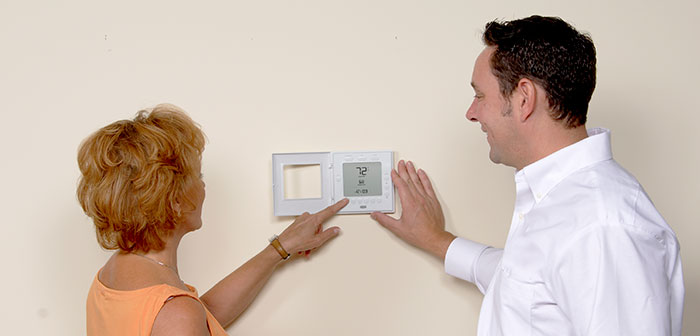If your HVAC system isn’t running as well, as usual, you might be tempted to contact a professional technician immediately. However, in some cases, checking a few simple things first can save you a lot of time and money.
Mt. Juliet, Tennessee, residents often experience bitter overnight temperatures during the winter. In at least one instance, locals had to withstand a night that plunged to -20 degrees Fahrenheit. When something like this happens, every second counts. Take a few minutes to see if you can make a simple adjustment instead of scheduling an HVAC repair.
1. Check the Air Filter
Reduced airflow hinders an HVAC unit’s ability to perform properly. As a result, energy efficiency goes down, and your utility bills go up. One of the most common causes of reduced air flow is a dirty filter. Start there when HVAC problems occur, and be sure to replace the filter frequently to minimize future issues.
2. Check the Thermostat
Incorrect thermostat settings are a common cause of unnecessary HVAC maintenance calls. Even if you’re confident that everything is set correctly, be sure to check the thermostat to ensure nothing was accidentally changed. It’s surprisingly easy to turn the HVAC unit off altogether from the thermostat. Many people have also switched their unit to air conditioning when they wanted heat and vice versa.
3. Check for Ice and Other Obstructions
If the unit is icy, you need to turn it off. Next, look for any obstructions blocking the supply vents and filter. Obstructions need to be cleared away, and this may be enough to restore your HVAC system to full functionality. If there aren’t any obstructions or things, don’t return to normal, be sure to contact a technician for assistance.
4. Check for Power Supply Issues
There might be a switch located near the HVAC unit that looks like a light switch. This can easily get flipped off, plunging your house into what seems like a heating or cooling nightmare. Simply flipping the switch back on should make everything work normally again.
If there’s not a switch or it hasn’t been flipped, check the circuit breaker. Many HVAC calls occur because of a blown fuse. Outdoor units sometimes have a separate fuse for the disconnect switch, so always check that as well.
5. Check for Flash Codes or the Pilot Light
Older gas furnaces stop working when the pilot light goes out. Therefore, anyone who has one of these units should always ensure the pilot light is still lit. Newer electric units don’t have this requirement, but they do usually have flash codes that can help you determine what’s wrong.
Keep in mind that seeing a flash code isn’t an automatic indicator that there is a problem. Check the furnace panel for an explanation of each code. If the flash code is indicative of an operational issue, be sure to contact a professional technician.
6. Check the Panel Switch
Is there a loose panel on your unit’s air handler? The associated panel switch may have cut the power as a safety measure. These panel switches are intended to flip their switch whenever a panel is removed or is not attached properly. In this instance, you will probably be able to repair the unit yourself by simply reattaching or tightening the panel.
There are several other items to keep an eye on as well. For example, a gas furnace may stop running because the utility company has cut off gas service. This doesn’t mean you didn’t pay your bill. However, it could mean there’s a gas leak or someone in the billing department made a mistake. If the gas valve is locked or there’s a red tag on the meter, contact the gas company for more details.
If none of these simple fixes gets your unit running again, you will need to schedule a professional HVAC maintenance call. Learn more about common HVAC issues or schedule routine HVAC maintenance by calling Bentley’s Air Conditioning today!

